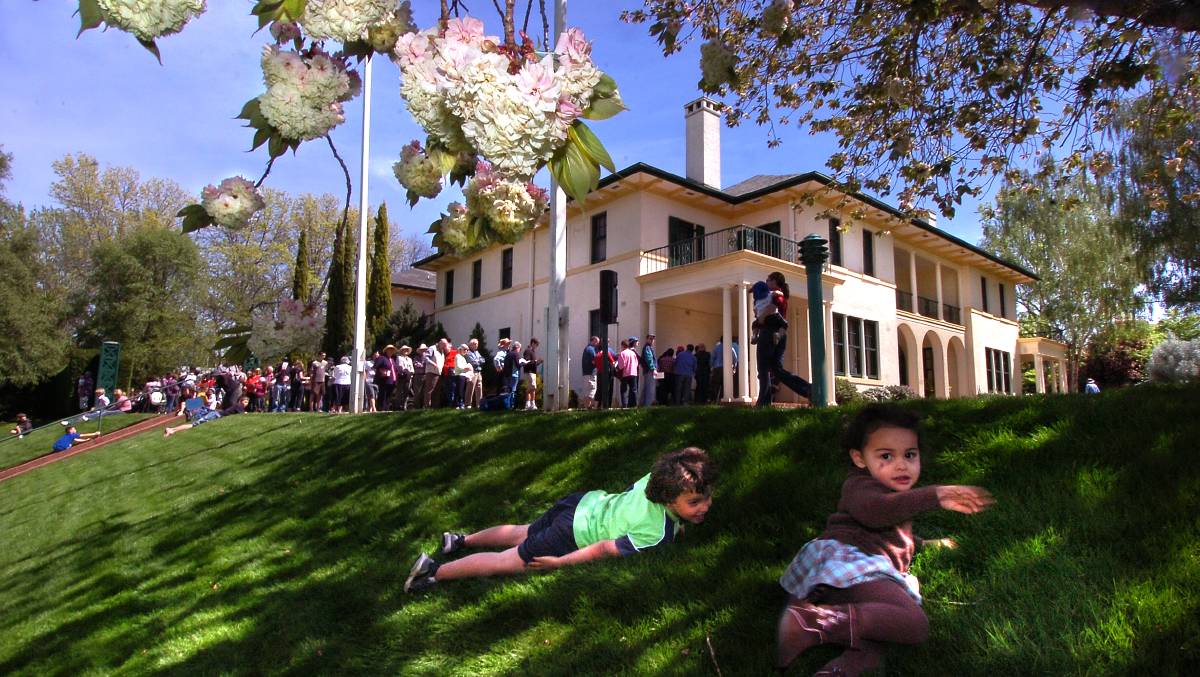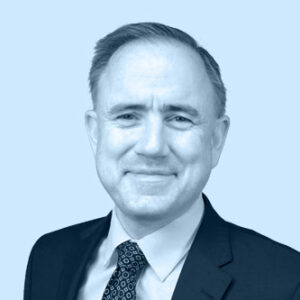
The thing that strikes you when reading about how The Lodge used to be, is just how humble an abode it once was. How, when Robert Menzies lived there for example, the home seemed embedded in the local community and neighborhood.
Menzies’ daughter Heather Henderson writes about how when she lived at The Lodge the neighbours would cut through the grounds in their car as an effective short cut. How her mother Dame Pattie Menzies would send fruit and vegetables from the garden for the PM’s staff. How a neighbour’s school kid knocked on the door for answers to a school project one day and got the answers direct from the prime minister himself.
It’s a different age but Anthony Albanese’s breakthrough decision to live in The Lodge has sent a powerful message about another type of local community.
It is a message that pays respect to the public service, the diplomatic corps, the Parliament, even the press gallery – all of which form part of the local ecosystem that is Australia’s democracy.
The new PM’s move to The Lodge can also be seen as being part of a bigger revitalisation of Canberra being pursued by the incoming government. New Finance Minister and local senator Katy Gallagher has committed to end the average staffing level cap in the public service which has put a strait jacket on the bureaucracy. Then there is the move to clamp down on outsourcing public service work to consultants. This was one of Labor’s biggest budget saving measures promised during the election campaign – estimated at $3 billion over the forward estimates. It is remarkable how little attention this policy has received given its scale and implications. If successfully implemented, this new policy will prove what an extraordinary multi-billion dollar public to private wealth transfer has been in place. A scheme that served to run down the capability of the public service to do things better and cheaper.
Canberra can and should serve as a beacon to the nation not an easy put-down for politicians to play one group of Australians off against another. Australia remains very much a federation. The pandemic has demonstrated the power of the states to act unilaterally. Whilst this was not always bad, it has underscored the need for unifying structures to help keep the country whole. Canberra is the physical embodiment of what binds the federation. It is the one place where all states are equal. It is the glue for the democracy. To run Canberra down risks running our democracy down and recent global events show this is a dangerous path. The new government’s messages being sent via its public service strengthening and the Prime Minister’s lodge decision are more significant than they seem. Combined they can play a part in repurposing the notions and images we hold in our head about Australia’s democracy.
However, some sections of the media were quick to slip into the banalities of the past. One Sky TV commentator attacked the PM’s decision to live in the “Canberra Bubble” as “disconnected from the real world and the voters who flipped the bird at both major parties”. Ignoring that many voters in Canberra also voted away from traditional parties, this missed the obvious point that Scott Morrison’s waterfront Kirribilli residence hardly fitted the “real word” tag. ANU Canberra-based astute historian Frank Bongiorno put it best when he responded “Yeah, let’s move Parliament House to Birdsville”.
His quip underlines a serious point – Canberra and its democratic institutions are here for a reason. To begin moving them away or deriding them risks the bedrock our federation is built on. It serves to feed a lazy, if sometimes popular, narrative that undermines our democracy.
Australians are rightly proud of the many democratic norms and intuitions that have been built – from early votes for women; to an independent and national electoral commission; to compulsory voting; preferential voting, and proportional representation in the Senate. Canberra and the role it plays in knitting together our federation and hosting our democratic infrastructure should be part of that list.
Good policy makes good politics they say, and so it seems when it comes to the PM’s home. Polling consistently reveals the overwhelming majority of Canberrans (75 per cent) support the prime minister residing fulltime at The Lodge, with only 15 per cent opposed. And this view is not just limited to Canberra.
The Australia Institute conducted national exit polling beginning on the night of the recent federal election, revealing over half of Australians (57 per cent) agree that the prime minister should live in The Lodge, compared to just 20 per cent who disagree. Interestingly, Coalition voters are most likely to agree that the prime minister should live in The Lodge (62 per cent), followed by Labor voters (58 per cent). A majority of Australians in the four largest states (54-61 per cent) agree that the prime minister should live in The Lodge, with the strongest support coming from Western Australia.
Perhaps the most important revelation from Heather Henderson’s reflections of her and her family’s time in the capital (contained in her book A Smile for My Parents, Allen & Unwin, 2013) was that Menzies originally thought Canberra was “rather a bleak place which took people away from their families”.
To this day, the image of Canberra is different to the reality. It seems Menzies’ experience – where he changed his mind to subsequently declare Canberra his “pride and joy” – is like so many others. If he could change to embrace Canberra so to can our national political culture.
There is much for Australian democracy to gain from Albanese’s decision to live in The Lodge. Perhaps too, for Anthony Albanese himself. Henderson recalls her father Robert Menzies coming to a dress up party hosted at The Lodge. She remembers him “sitting, Buddha-like, draped in a sheet, with a red ribbon tied around his exceptionally large tummy, and a notice: “THE INFLATION PROBLEM.”
Between the Lines Newsletter
The biggest stories and the best analysis from the team at the Australia Institute, delivered to your inbox every fortnight.
You might also like
South Australia Proves Australia’s Freedom of Information System can be Fixed
The Australia Institute will attend a Senate Inquiry today to highlight flaws in Australia’s broken freedom of information (FOI) system and argue for much-needed reforms modelled on South Australia’s approach.
Labor’s pledge to depoliticise the public service is undermined by the government only hearing what it wants to hear on climate change
While last year’s robodebt royal commission exposed a shocking lack of ethics among senior ranks of the Australian public service, the systemic condition still largely seems to be regarded as an aberration.
If Trump returns to the White House, should we rethink the US alliance?
With a Trump resurgence looming, the Australian Government’s fixation on AUKUS should not come at the expense of what we are frequently assured is one of the core components of the US-Australia alliance: shared democratic values, writes Dr Emma Shortis.


